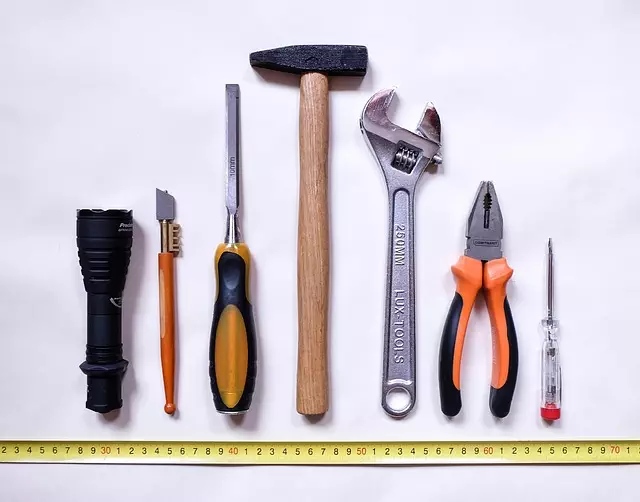Concrete stem wall repair is vital for residential foundation integrity, addressing issues like cracks, bowing, and collapse caused by soil movement, moisture, or settling. Early identification of problems through regular inspections is key. Repairs range from simple crack sealing to advanced methods like carbon fiber wrapping or steel reinforcement. Effective repair strengthens walls, mitigates main foundation issues, and ensures property safety. Investing in high-quality materials and professional techniques offers long-term stability and prevents future damage, increasing property value. Regular maintenance, including waterproofing measures, is crucial for the longevity of repaired stem walls.
“Discover the art of concrete stem wall repair, a vital aspect of residential foundation maintenance. This comprehensive guide unravels the intricacies of addressing common issues in your home’s structural backbone. From identifying cracks and gaps to understanding the reinforcement process, we demystify every step. Learn about durable materials, cost-effective solutions, and best practices for long-lasting repairs.
Empower yourself with knowledge on residential foundation repair, ensuring a solid investment in your home’s future.”
Understanding Concrete Stem Wall Repair: A Comprehensive Overview

Concrete stem wall repair is a critical aspect of residential foundation repair, addressing structural integrity and longevity. Stem walls, often found in basement or crawlspace areas, support the weight of the structure above and play a vital role in preventing water intrusion and soil erosion around the perimeter of a home. Over time, these walls can sustain damage from various factors like settling, shifting soils, and exposure to moisture, leading to cracks, bowing, or even collapse.
Understanding concrete stem wall repair involves recognizing common issues and available solutions. Cracks in the wall may indicate settlement or movement of the foundation, necessitating evaluation by a professional. Repairs can range from simple crack sealing to more complex methods like carbon fiber wrapping or steel reinforcement, depending on the extent of damage. Effective repair not only strengthens the stem wall but also mitigates potential issues with the main foundation structure, ensuring the safety and stability of the residential property.
Identifying Common Issues in Residential Foundation Walls

Residential foundation walls, over time, can manifest various issues that require expert attention. Common problems include cracks, bulges, and uneven surfaces, often caused by settlement, shifting soil, or structural weaknesses. These defects not only compromise the wall’s integrity but also signal deeper problems within the foundation structure. For instance, a cracked stem wall might indicate underlying moisture intrusion or improper construction.
Identifying these issues early is crucial for effective residential foundation repair. Homeowners should look out for signs like vertical or horizontal cracks, especially in corners or joints, as these could be indicators of structural distress. Regular inspections, especially after extreme weather events, can help catch potential problems before they escalate, ensuring the longevity and stability of the foundation.
The Process of repairing and reinforcing stem walls

Repairing and reinforcing stem walls is a meticulous process that involves several steps, ensuring the structural integrity of residential properties. It begins with a thorough inspection to identify the extent of damage, which could range from cracks in the concrete to severe erosion. Once the issue is pinpointed, professionals employ various techniques tailored to the problem. This may include patching small cracks with specialized epoxy injections or replacing significant portions of the stem wall with new concrete, ensuring it’s reinforced with steel bars for added strength.
The next phase focuses on stabilization and reinforcement. This could involve installing tie-down anchors or adding support beams to alleviate stress on the walls. For older structures, a comprehensive evaluation might reveal the need for a complete stem wall replacement, utilizing modern construction methods and materials to ensure longevity and stability against potential environmental factors, thus mitigating risks associated with Residential Foundation Repair.
Choosing the Right Materials for Durability

When it comes to concrete stem wall repair, selecting the appropriate materials is key to ensuring longevity and durability, especially in the context of residential foundation repair. The chosen products must withstand environmental factors like extreme temperatures, moisture, and sunlight, which can degrade concrete over time. High-quality, weather-resistant cement mixes are ideal for repairing cracks and weak spots, offering both strength and flexibility.
For long-term protection, consider incorporating fiber reinforcement into the mix to enhance structural integrity. These fibers act as a sort of internal armor, preventing further damage and promoting the overall stability of the stem wall. By investing in top-tier materials, homeowners can rest assured that their concrete repairs will hold up against the challenges posed by varying weather conditions, thus preserving the structural soundness of their homes.
Cost Considerations and ROI (Return on Investment)

When considering concrete stem wall repair, one of the most critical aspects for homeowners is understanding the cost implications and potential Return on Investment (ROI). Unlike some residential foundation repairs that can be addressed with less invasive and more affordable solutions, stem wall repairs often require significant investment. The cost of materials, labor, and specialized equipment can add up quickly, especially if structural damage is extensive. However, it’s essential to remember that these repairs are necessary for maintaining the integrity of a home’s foundation, which is vital for long-term stability and preventing further damage.
The ROI on concrete stem wall repair can be substantial when calculated over time. A sturdy, well-maintained foundation significantly increases the property’s value and ensures the longevity of the structure. By addressing stem wall issues early, homeowners can avoid more costly repairs or even the need for structural reinforcement in the future. This long-term perspective is crucial when justifying the initial investment, as it positions concrete stem wall repair as a strategic, cost-saving measure rather than an expense.
Best Practices for Long-Lasting Results

When it comes to concrete stem wall repair, implementing best practices is paramount for achieving long-lasting results in residential foundation repair. The first step involves assessing the extent of damage, which includes identifying cracks, bulges, or any signs of instability. This thorough inspection determines the appropriate repair method—whether it’s a simple crack repair with epoxy injection or more complex structural reinforcement.
Using high-quality materials is another key factor in ensuring durability. For instance, choosing the right type of concrete mix and reinforcing bars can significantly impact the wall’s strength and longevity. Additionally, proper preparation of the repair area, including cleaning and degreasing, is essential to create a solid bond between new and existing concrete. Regular maintenance, such as sealing cracks and checking for water intrusion, plays a vital role in preventing future damage and preserving the integrity of the residential foundation repair.
Maintaining Your Repaired Concrete Stem Wall

After successfully repairing your concrete stem wall, proper maintenance is key to ensuring its longevity and stability, especially in the realm of residential foundation repair. Regular inspection is the first step; check for any signs of damage, cracks, or water seepage, as these issues can weaken the structure over time. Addressing small problems early on can prevent more significant repairs later on, making it a crucial part of your home maintenance routine.
To maintain the integrity of the repaired wall, consider using waterproof membranes and sealing agents to protect against moisture intrusion. This is especially important in regions with high rainfall or humid climates, as water can lead to corrosion and further damage. Additionally, proper drainage around the base of the stem wall is essential; ensure downspouts direct water away from the foundation, preventing waterlogging that could compromise the repair.
